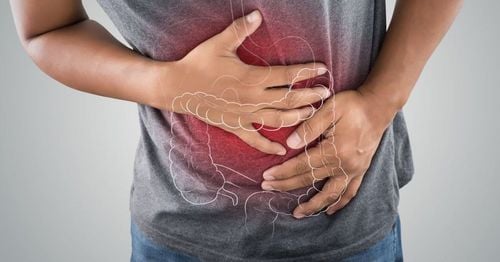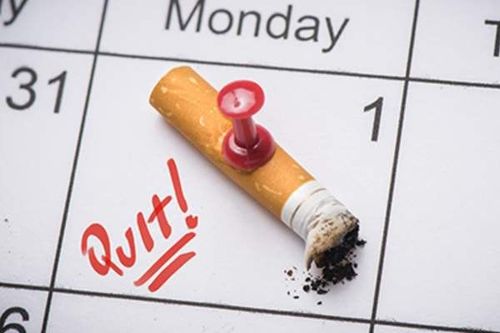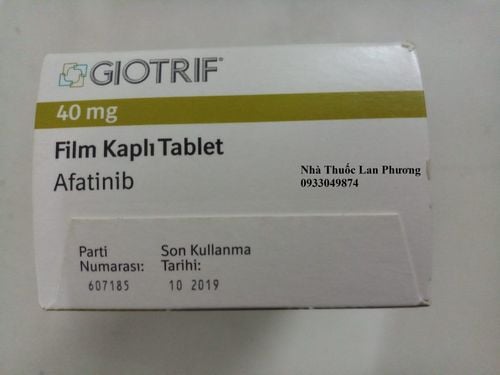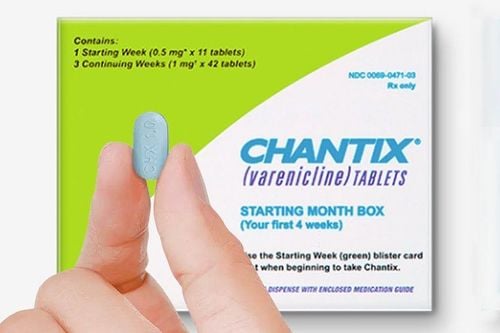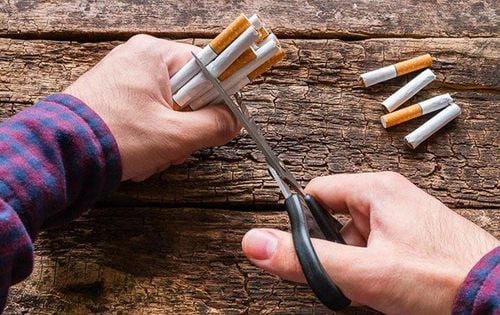This is an automatically translated article.
The article was written by Doctor Phan Dinh Thuy Tien - General Internal Medicine, Department of Examination & Internal Medicine - Vinmec Nha Trang International General HospitalSmoking is one of the leading causes of preventable death in the United States, but quitting can be daunting. Many people fear that it will take a long time to see improvements in health and well-being, but the timeline for seeing real benefits is quicker than most people realize. The health benefits begin at least an hour after the last cigarette and continue to improve.
1. Fast facts about quitting smoking
Quitting smoking means breaking the addiction cycle and essentially helping the brain stop craving nicotine. To be successful, smokers who want to quit need to have a plan to beat cravings and triggers. The benefits of quitting smoking begin within 1 hour of your last cigarette. The sooner smokers quit, the lower their risk of cancer, heart and lung disease, and other smoking-related illnesses.
2. Timeline
The benefits are almost immediate. As soon as a person stops smoking, their body begins to recover in the following ways:
After 1 hour Within 20 minutes of smoking the last cigarette, the heart rate will decrease and return to normal. Blood pressure begins to drop and circulation may begin to improve.
After 12 Hours Cigarettes contain many known toxins including carbon monoxide, a gas found in tobacco smoke.
This gas can be harmful or fatal in high doses and prevents oxygen from entering the lungs and blood. When large doses are inhaled in a short time, it is possible to suffocate due to lack of oxygen.
After just 12 hours of not smoking, the body will clear itself of the excess carbon monoxide in cigarettes. Carbon monoxide levels return to normal, increasing the body's oxygen levels.
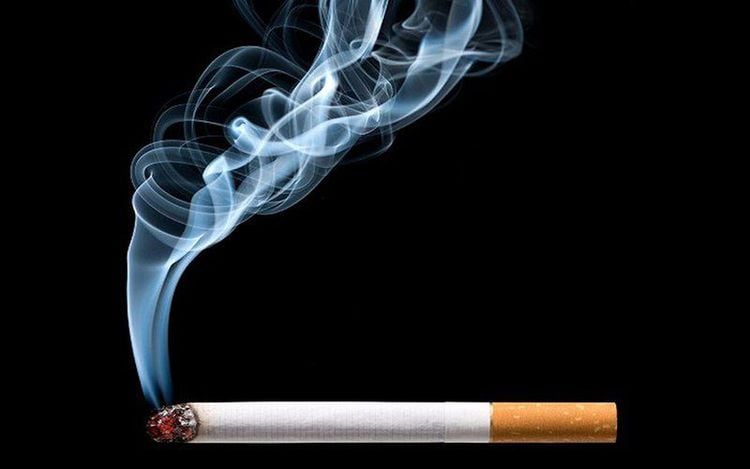
Khói thuốc lá chứa nhiều chất độc đã biết bao gồm carbon monoxide
After 1 day Just 1 day after quitting, the risk of heart attack begins to decrease. Smoking increases the risk of developing coronary heart disease, which makes heart-healthy exercise difficult. more difficult. Smoking also increases blood pressure and increases blood clotting, increasing the risk of stroke. Within 1 day of quitting smoking, a person's blood pressure begins to drop, reducing the risk of heart disease caused by high blood pressure due to high blood pressure. caused by smoking. During this short time, a person's oxygen levels will increase, making physical activity and exercise easier, and promoting good cardiovascular habits.
After 2 days Smoking damages the nerve endings responsible for the senses of smell and taste. Within just 2 days of quitting, a person may notice a heightened sense of smell and more vivid taste as these nerves begin to heal.
After 3 days 3 days after quitting smoking, the nicotine concentration in a person's body will be depleted. While not having nicotine in the body is healthier, this initial decline can cause nicotine withdrawal. About 3 days after quitting, most people will feel upset and irritable, have a severe headache, and have a craving for food as their body readjusts.
After 1 month Within 1 month, a person's lung function starts to improve. As the lungs heal and lung capacity improves, former smokers may notice less coughing and shortness of breath. Athletes' endurance increases, and former smokers may notice new possibilities for cardiovascular activities, such as running and jumping.
After 1-3 months For the next several months after quitting, circulation continues to improve.
After 9 months 9 months after quitting, the lungs have healed significantly on their own. The delicate, hair-like structures inside the lungs called cilia have recovered from the cigarette smoke afflicted them. These structures help push mucus out of the lungs and help fight infection.
Around this time, many ex-smokers notice a decrease in the frequency of lung infections as the healed cilia can do their job more easily.
One year after quitting smoking, a person's risk of coronary heart disease is halved. This risk will continue to decrease past the 1-year mark.
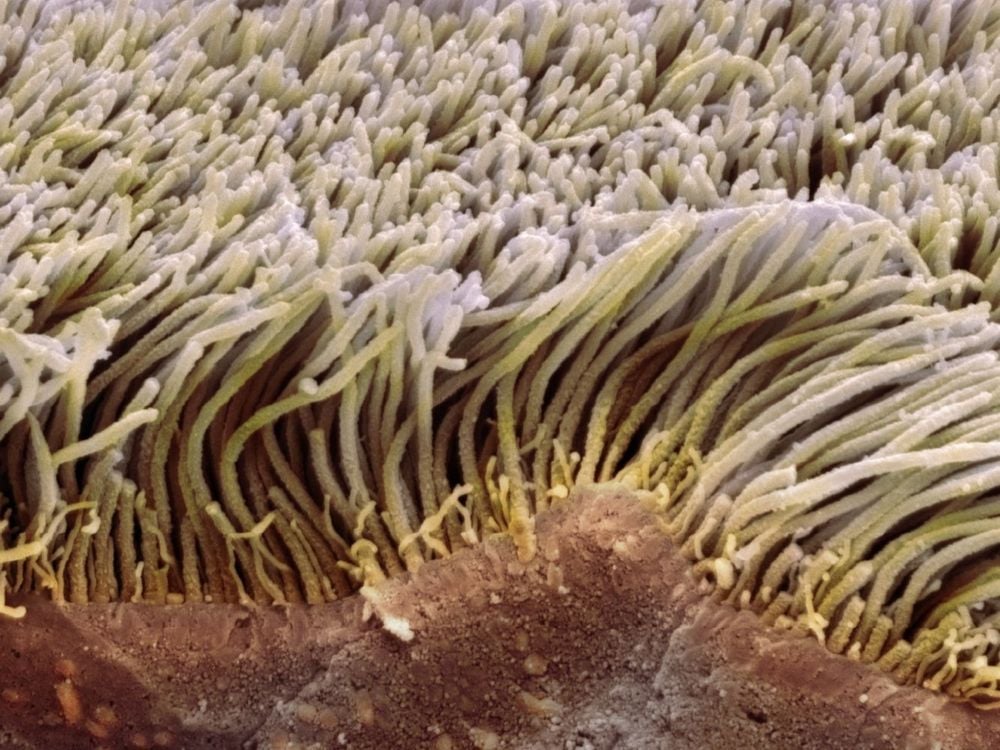
Lông chuyển đóng vai trò quan trọng trong việc bảo vệ phổi
After 5 years Tobacco contains many toxins known to cause narrowing of arteries and blood vessels. These same toxins also increase the likelihood of blood clots forming.
After 5 years of not smoking, the body has healed itself enough for the arteries and blood vessels to start widening again. This expansion means the blood is less likely to clot, reducing the risk of stroke.
The risk of stroke will continue to decrease over the next 10 years as the body continues to recover.
After 10 years After 10 years, a person's chance of developing lung cancer and dying from the disease is nearly half that of someone who continues to smoke. The chance of developing cancer of the mouth, throat or pancreas has been significantly reduced.
After 15 years After 15 years of quitting smoking, the likelihood of coronary heart disease is the same as that of a non-smoker. Similarly, the risk of developing pancreatic cancer has been reduced to the same level as for non-smokers.
After 20 years After 20 years, the risk of dying from smoking-related causes, including lung disease and cancer, drops to that of someone who has never smoked in their life. In addition, the risk of developing pancreatic cancer is reduced compared with people who have never smoked.
3. The benefits of smoking cessation
Smoking is a harmful habit that can lead to serious health complications and death. When a person quits smoking, the body will begin to heal naturally and regain the vitality of a non-smoker over time.
Some effects, such as a drop in blood pressure, are seen almost immediately. Other effects, such as the risk of developing lung cancer, heart disease, and lung disease, take years to drop to levels of a non-smoker.
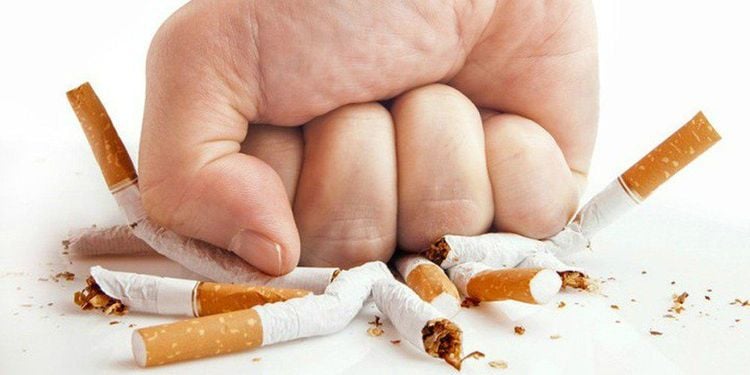
Cai thuốc lá đem lại những lợi ích tốt đẹp cho sức khỏe con người
In addition to smoking cessation, each individual should actively combine lung cancer screening - this is the most effective measure for you to detect and promptly treat lung cancer, protect your health and life . Currently, at Vinmec international general hospitals, there is a lung cancer screening package with many outstanding advantages such as: A team of highly qualified and experienced doctors; Having a full range of specialized facilities to diagnose the disease and stage it before treatment: Endoscopy, CT scan, PET-CT scan, MRI, histopathological diagnosis, genetic - cytological testing... There are full range of main cancer treatment methods: surgery, radiation therapy, chemotherapy, stem cell transplant....
Please dial HOTLINE for more information or register for an appointment HERE. Download MyVinmec app to make appointments faster and to manage your bookings easily.
Article referenced source: medicalnewstoday.com



